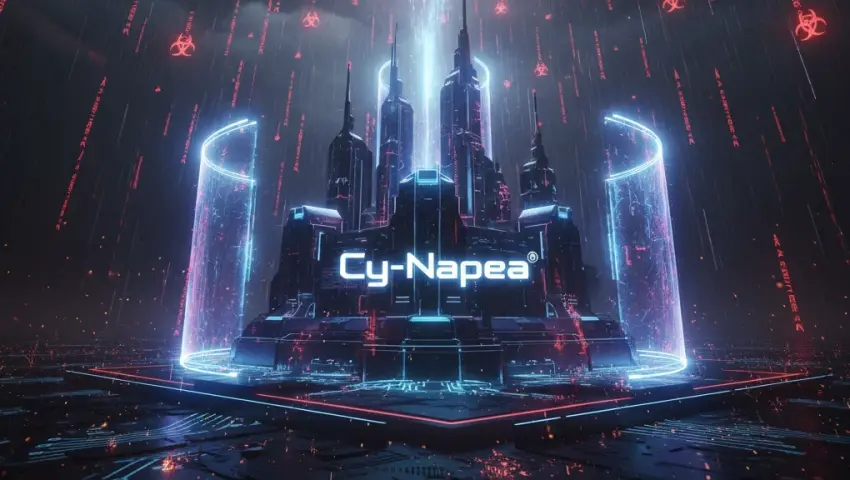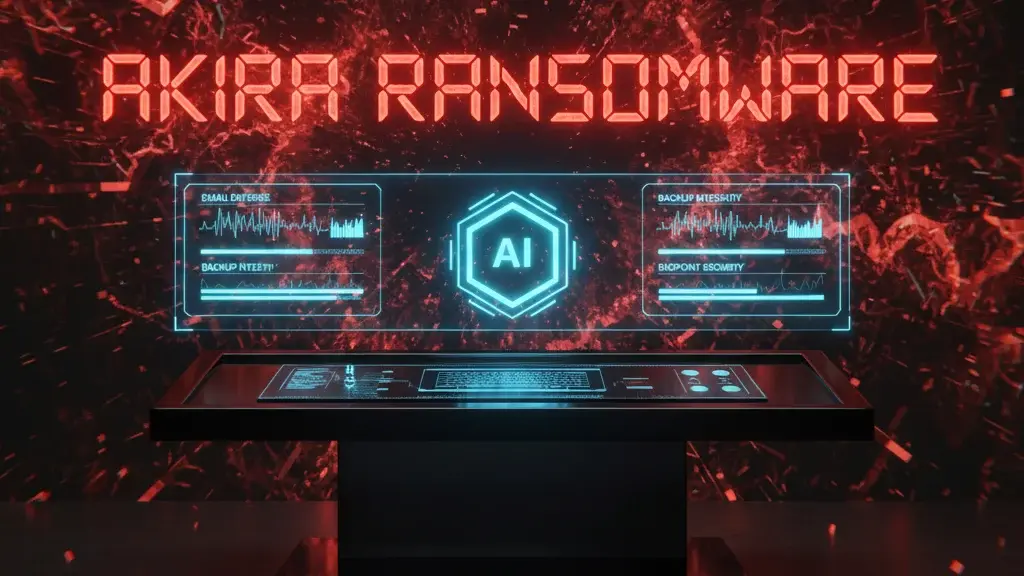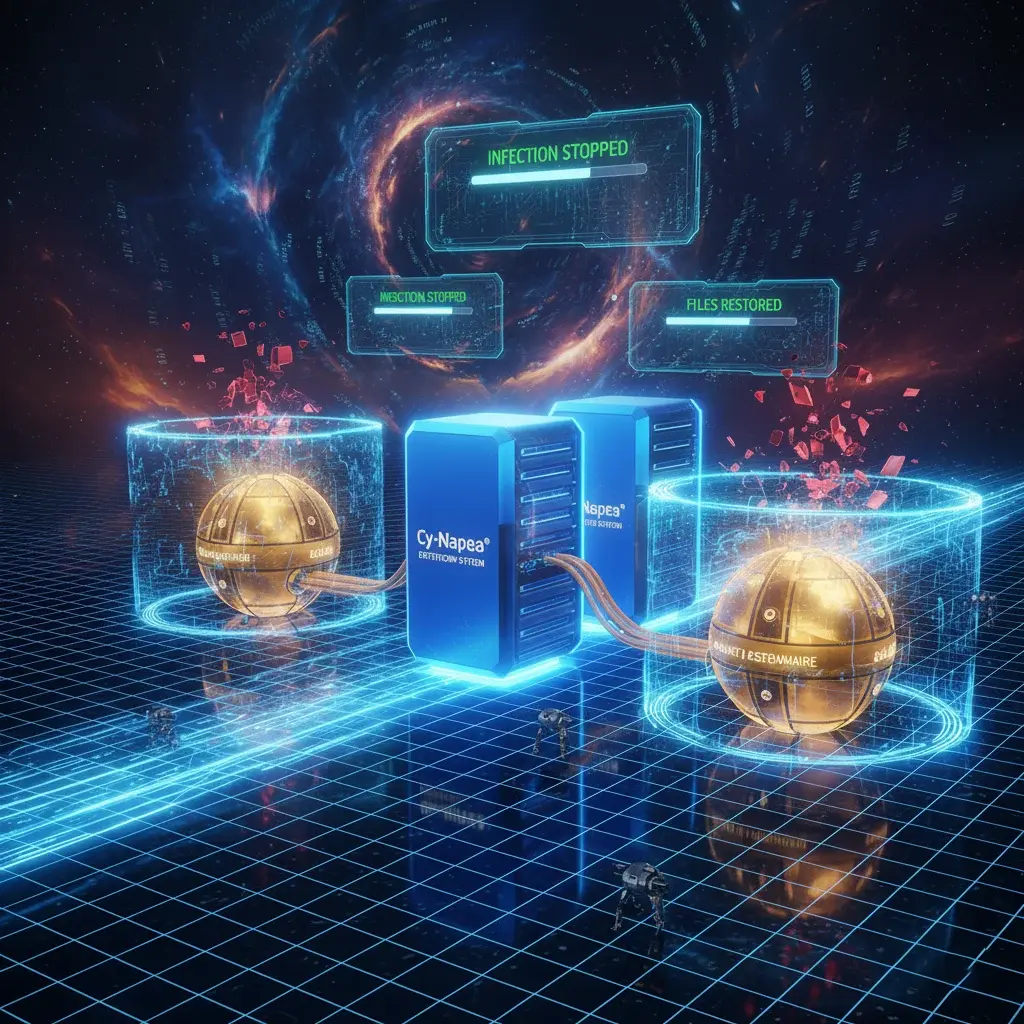
Cy‑Napea® vs. Akira: Enterprise Resilience Against a $244M Ransomware Menace
The Rise of Akira: A Symphony of Shadows

There are names in the digital underworld that echo like whispered curses, and among them, Akira has become a thunderclap. Emerging in the spring of 2023, this ransomware collective did not creep quietly into existence — it erupted, carving its signature into the fabric of cyberspace with ruthless precision. What began as a handful of attacks soon swelled into a campaign of terror that spanned continents, industries, and lives.
Akira is not merely malware. It is a philosophy of disruption, a calculated orchestration of chaos. Its operators wield the double‑edged sword of encryption and extortion, locking victims out of their own systems while dangling the threat of public humiliation through leaked data. Hospitals, universities, manufacturers, energy providers — none have been spared. Each victim becomes a pawn in a grander spectacle, each ransom note a reminder that the digital world is fragile, and its guardians often unprepared (Wikipedia).
By late 2025, Akira’s toll had surpassed $240 million USD in extorted payments, a staggering figure that speaks not only to its technical prowess but to the desperation of its victims (SOCRadar). The group’s reach is global, its appetite indiscriminate. From the industrial heartlands of North America to the cultural institutions of Europe, Akira has left a trail of encrypted ruins.
Technically, Akira is a shapeshifter. Its earliest incarnations were written in C++, targeting Windows environments with surgical precision. But the group evolved with terrifying speed. Within months, Linux servers and VMware ESXi infrastructures were under siege (RansomLook). By 2024, the Rust‑based “Megazord” variant emerged, faster, stealthier, more devastating. It did not simply encrypt files; it dismantled the very scaffolding of virtualized enterprises. Exploiting unpatched VPNs, abusing Cisco gateways without multifactor authentication, and burrowing into SonicWall firewalls, Akira proved that it was not chasing vulnerabilities — it was hunting negligence (CISA advisory).
The world has taken notice. Joint advisories from the FBI, CISA, HHS, and Europol have painted Akira as a predator of unprecedented cunning (Daily Security Review). Yet advisories are little more than warnings shouted into the storm. For every patch applied, Akira finds another crack. For every firewall raised, it discovers another door left ajar.
Akira thrives on speed. It encrypts in hours, exfiltrates in silence, and demands payment with theatrical menace. Its ransom notes are not mere instructions; they are declarations of dominance, dripping with the arrogance of a group that knows it has bent nations and corporations to its will.
And so, Akira stands today as the embodiment of digital dread — a specter that reminds us that the line between order and collapse is perilously thin. It is the antagonist in our unfolding drama, the storm against which resilience must be measured.

Cy‑Napea®: The Fortress of Four Pillars
If Akira is the storm, Cy‑Napea® is the fortress built to withstand it. Where ransomware thrives on fear and speed, Cy‑Napea® answers with discipline, foresight, and resilience. It is not a single wall, but a citadel of layered defenses — four pillars rising together to form an architecture of permanence in a world of digital impermanence.
Cy‑Napea®’s philosophy is simple: no single layer is infallible, but together they form near‑total security. If one barrier is breached, the next rises to catch the intruder. This cascading defense model delivers 99.99% protection, ensuring that clients remain operational even against the most aggressive ransomware families. Against Akira specifically, Cy‑Napea® demonstrates almost 98% success when deploying XDR and 86% success with EDR alone — proof that layered resilience is not theory, but measurable reality.
Cybersecurity Awareness Training
The first line of defense is human vigilance. Cy‑Napea® transforms employees from potential liabilities into guardians of their networks through structured awareness programs. Training is not a lecture but a cultural shift, embedding vigilance into daily routines and ensuring that phishing emails, malicious links, and social engineering attempts are met with suspicion and resistance (Cy‑Napea® Cybersecurity Awareness Training).
If awareness fails, the fortress does not crumble — the next layer rises.
Email Security
The inbox is the battlefield where most attacks begin. Cy‑Napea® fortifies this vulnerable gateway with advanced filtering, anomaly detection, and strict enforcement of DMARC, SPF, and DKIM protocols.
What makes Cy‑Napea® unique is its integration flexibility:
Native integration with Microsoft 365 and Google Workspace.
Universal integration with any mail server via MX records, ensuring protection across diverse infrastructures.
This adaptability places Cy‑Napea® in a unique position globally — capable of defending enterprises regardless of their email ecosystem (Cy‑Napea® Email Security).
If a malicious email slips through, the endpoint defenses stand ready.
Endpoint Defense and Response (EDR / EDRR / XDR / XDRR / MDR)
The third pillar is Cy‑Napea®’s integrated detection, response, and recovery framework. Unlike fragmented solutions, it unifies EDR, EDRR, XDR, XDRR, and MDR into a seamless continuum. Threats are not only detected and contained; systems are restored to verified operational states through Extended Detection, Response, and Recovery (XDRR).
EDR alone delivers 86% success against Akira, stopping most intrusions before they escalate.
XDR raises the bar to 98% success, correlating signals across endpoints, networks, and workloads to neutralize even advanced attacks.
EDRR and XDRR, combined with Cy‑Napea®’s script deployment and automation rules, enable something unique in the world: automated recovery of infected files. In this ecosystem, detection does not merely stop the attack — it “talks” directly to the backup system, initiating recovery in real time.
This orchestration makes Cy‑Napea® the only platform where EDR/XDR and backup are integrated into a living dialogue, capable of halting attacks and repairing their impact (EDR, EDRR, XDR, XDRR, MDR).
Backup with Immutable Storage
The final pillar is permanence. Cy‑Napea®’s Advanced Backup and Cloud Backup solutions merge into a unified promise: that even if attackers breach defenses, critical data remains untouchable. Immutable storage, geo‑redundancy, and disaster recovery capabilities ensure that recovery is not a gamble but a certainty. Business continuity is preserved, regulatory compliance is maintained, and trust is never compromised (Cy‑Napea® Advanced Backup, Cy‑Napea® Cloud Backup).
If every other layer were to fail, immutable backup guarantees survival.

The Centralized Console — A Unique Global Advantage
What elevates Cy‑Napea® above all competitors is not only its layered defenses but its architecture of simplicity. All capabilities — awareness, email security, detection, response, recovery, and backup — are managed through a centralized console and deployed via a single agent.
This means:
No fragmented dashboards.
No multiple agents slowing endpoints.
One unified ecosystem, delivering clarity, speed, and efficiency.
This single‑agent, single‑console design is unique in the world, ensuring that enterprises can manage their entire cybersecurity posture without complexity or compromise.
The Philosophy of Cy‑Napea®
Together, these four pillars form more than a defense strategy; they form a philosophy. Cy‑Napea® does not wait for the storm to pass — it builds a fortress that endures through it. Awareness, email security, intelligent detection, and immutable backup converge into a single promise: that businesses can stand unbroken against the symphony of shadows.
Where Akira seeks to erase, Cy‑Napea® ensures permanence. Where Akira thrives on speed, Cy‑Napea® responds with foresight. This is not merely technology; it is resilience incarnate, the architecture of continuity in a world defined by disruption.
From Shadows to Fortress
Akira thrives on fear, speed, and chaos. It encrypts, exfiltrates, and extorts with ruthless precision, leaving victims scrambling in the dark. Yet against this symphony of shadows stands Cy‑Napea® — a fortress of four pillars, a unique ecosystem where detection speaks to backup, where automation restores what ransomware seeks to destroy, and where vigilance is woven into every layer of defense.
With 99.99% protection, measured success rates of 98% against Akira with XDR and 86% with EDR, and the world’s only platform where EDR/XDR and backup communicate seamlessly, Cy‑Napea® does not merely defend — it guarantees continuity. Every breach attempt is met with another barrier, every intrusion countered by recovery, every shadow dispelled by resilience.
But even the strongest fortress has a truth it cannot ignore: the human factor is the weakest link. A chain is only as strong as its weakest link, and no matter how advanced the software, if system administrators and employees do not know what they are doing, the defenses falter. Technology alone cannot save an organization; awareness, discipline, and responsibility must stand alongside it. Cy‑Napea®’s ecosystem is designed to empower people as much as machines, because resilience is a partnership between human vigilance and technological strength.
This is not just cybersecurity. This is permanence in a world defined by disruption.
The storm is here. The question is not if, but when.
And when it comes, will your business stand unbroken?




